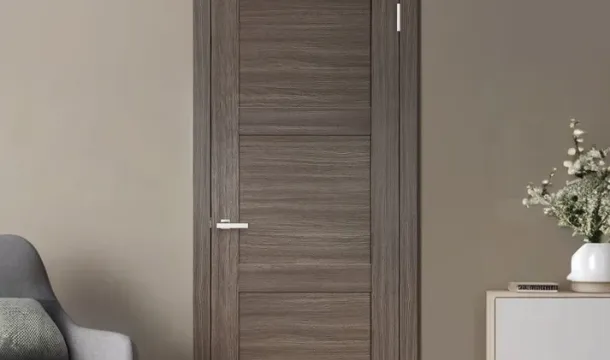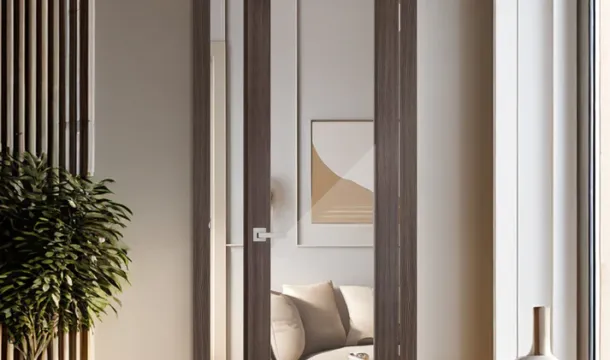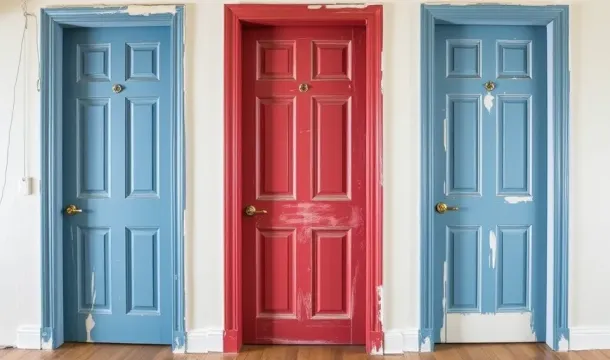Privacy Ratings Impact on Choosing Interior Doors
Popular Articles
- Choosing the Perfect Interior Doors for Your Canadian Home
- A Complete Guide to Choosing Interior Doors for Canadian Homes
- The Challenges of Painting Interior Doors
- Understanding Interior Doors and Their Role in Your Home
- The Perfect Blend of Reliability and Design: Interior Doors with Italian "Sandwich" Technology
Prioritizing evaluation scores that measure data safety and compliance standards is key to ensuring confidentiality and trust within your living space. These assessments provide a clear framework for understanding how well a door contributes to safeguarding sensitive information and maintaining physical security. When selecting entryways, opting for those with high compliance ratings supports both legal requirements and the reputation of your property.
Incorporating products with verified protection features reduces vulnerabilities related to unauthorized access or data breaches. This approach aligns with best practices for maintaining safety protocols, particularly in environments where confidential activities occur. Evaluations focused on structural integrity, locking mechanisms, and resistance to tampering offer measurable indicators of reliability beyond aesthetic appeal.
The relationship between thorough assessment results and long-term trust cannot be overstated. Homeowners and designers benefit from integrating these insights early in the decision process, avoiding costly retrofits or security lapses. Emphasizing transparency in certification processes also enhances confidence among occupants by demonstrating a commitment to preserving privacy and upholding a strong reputation for dependability.
Understanding Privacy Rating Metrics
Focus on metrics that quantify sound attenuation, material density, and seal integrity to evaluate room confidentiality effectively. Sound Transmission Class (STC) scores provide a direct measurement of how well a partition limits noise transferhigher STC values correlate with better acoustic protection and increased safety from eavesdropping.
Data transparency in these evaluations is vital; manufacturers should supply detailed test reports verifying compliance with industry standards such as ASTM E90 or ISO 140-3. This documentation supports informed decisions by ensuring the claimed performance aligns with actual product capabilities.
Key Components of Assessment
Security hinges on both physical barriers and acoustic sealing. Doors constructed with multi-layer cores combining solid wood, composite materials, and soundproofing inserts enhance protection against unwanted intrusion of sound waves.
Evaluation must also consider frame construction and weatherstripping quality since gaps often undermine overall effectiveness. A high-quality perimeter seal reduces sound leakage substantially, improving confidentiality in private spaces.
Reputation and Compliance Considerations
A product's reputation within professional circles often reflects consistent fulfillment of rigorous testing protocols. Selecting vendors who prioritize third-party certification helps guarantee safety benchmarks are met reliably. This not only safeguards sensitive conversations but also supports long-term trust in the installed solution.
Incorporating these metrics into your selection process ensures robust protection of confidential environments while maintaining clarity about performance levels through transparent data presentation.
Comparing Door Materials by Privacy Score
Solid wood doors consistently achieve the highest privacy evaluations, offering superior sound insulation and visual obstruction that enhance safety and trust within residential spaces. Their dense structure ensures optimal protection against noise transmission, supporting a stronger sense of security and compliance with personal space requirements.
Medium-density fiberboard (MDF) doors provide a balanced reputation for privacy due to their uniform composition, which minimizes gaps and weak points. While less robust than solid wood, MDF models maintain reliable data on noise reduction, making them a cost-effective choice without sacrificing transparency in performance metrics.
Hollow core doors rank lower in privacy assessments, as their internal cavities allow sound leakage and reduce overall protection. Despite being lightweight and budget-friendly, these doors often fall short in environments where trust and security are priorities, reflecting weaker compliance with stricter evaluation standards.
Glass panel inserts significantly impact privacy scores depending on opacity and thickness. Frosted or textured glass can improve confidentiality while maintaining light flow; however, clear glass drastically reduces the perception of seclusion and protection. Transparency in material properties plays a crucial role in these evaluations.
Metal doors exhibit excellent durability and contribute positively to safety ratings but vary widely in acoustic performance depending on construction quality. Proper sealing and insulation are necessary to maximize their privacy effectiveness, ensuring full compliance with stringent security expectations.
When prioritizing confidentiality levels based on objective assessments, solid wood remains the benchmark for full protection. Incorporating trusted evaluation data into selection criteria guarantees alignment with both functional needs and regulatory standards concerning personal space security.
Privacy Ratings and Room Functionality
For spaces requiring heightened confidentiality and data protection, such as home offices or personal study rooms, selecting barriers with superior sound insulation and sealing properties enhances security and trust. A door's ability to minimize noise transmission directly supports compliance with workplace safety standards and preserves sensitive information.
In contrast, areas like living rooms or kitchens prioritize openness and transparency, where complete acoustic isolation may hinder social interaction rather than improve it. Here, opting for models with moderate sound dampening strikes a balance between connection and a sense of personal space, reinforcing comfort without compromising the reputation of a well-designed environment.
Functional Recommendations by Room Type
Bedrooms benefit from units that offer increased protection against external sounds to ensure restful privacy, contributing to occupant safety and wellbeing. Materials with higher density not only enhance confidentiality but also elevate overall security within the household.
Bathrooms demand solutions that prevent moisture ingress while maintaining discretion; doors featuring specialized seals support both hygiene compliance and privacy expectations effectively. Such measures uphold the integrity of personal zones while safeguarding health standards.
Popular Articles
- Choosing the Perfect Interior Doors for Your Canadian Home
- A Complete Guide to Choosing Interior Doors for Canadian Homes
- The Challenges of Painting Interior Doors
- Understanding Interior Doors and Their Role in Your Home
- The Perfect Blend of Reliability and Design: Interior Doors with Italian "Sandwich" Technology

Choosing the Perfect Interior Doors for Your Canadian Home

A Complete Guide to Choosing Interior Doors for Canadian Homes
